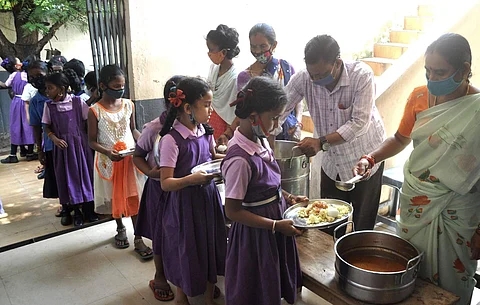

After a gap of 21 years, a school in Karnataka got on board the Mid-Day Meal Scheme (MDMS) this week. The scheme was launched in 1995 and is currently benefiting over 120 million students. All states and union territories (UTs) in India are providing meals to school students. The MDMS is a national school meal programme that provides free-of-cost lunch to students in government and government-aided schools.
The cost of the MDMS is borne by the state governments. The central government provides a grant of Rs 15 per student per day, but the states are responsible for the remaining costs, such as the procurement of food, cooking, and transportation.
The cost of the MDMS varies from state to state, depending on the price of food, the number of students and the efficiency of the implementation. In general, the cost ranges from Rs 20 to Rs 30 per student per day.
The MDMS has been a major success in reducing hunger and malnutrition among schoolchildren in India. It has also helped to improve school attendance and retention rates. However, the scheme has also been criticised for its lack of quality control and for the occasional occurrence of food poisoning.
In recent years, the government has taken steps to improve the quality of the MDMS. These steps include the introduction of a new menu that is more nutritious, the use of fortified foods and the training of cooks and supervisors.
